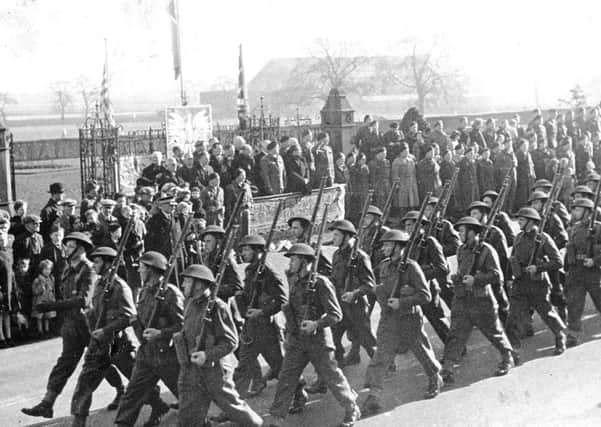Last link with Falkirk's Polish heritage


I am referring of course to the ‘‘big Polish Club’’ in Arnot Street which was home for decades to the ex-servicemen who made their homes here when their land fell to German invasion and then Communist domination.
Several years ago, when the ‘‘wee Polish Club’’ in Comely Place was demolished, I wrote about the experiences of the Polish community in Falkirk and I make no apology for returning to the story today.
Advertisement
Hide AdAdvertisement
Hide AdAlthough many young Polish people work here today the circumstances of their arrival is very different from those of their predecessors.
When France fell to the German army in 1940 many Polish officers who had gone there following the invasion of their own country sought safety in Britain and thousands were dispersed to Scotland including the Falkirk area. They were determined to carry on the struggle and were helped by the local people who provided mansion houses like South Bantaskine, Callendar House and Kinnaird as well school and church halls.
Friendships were forged and the handsome soldiers with their dashing style won the hearts of many a Falkirk girl.
A Polish Soldiers’ Club opened in the Masonic Temple in Lint Riggs in 1942 and the monthly meetings of the Scottish Polish Society were well attended and included all kinds of social and cultural activities.
Advertisement
Hide AdAdvertisement
Hide AdThe invasion of France in 1944 saw the departure of most but after the war, with Poland under communist control, many opted to return to Scotland to find work in the mines and foundries. Dozens settled in Falkirk and began to develop a new life.
In 1947 a room in the High Street above Hepworths (later the Next store) was leased and it became a new Polish centre where cultural activities thrived and children could learn the language and customs of their fathers’ land.
But there were problems. One group hoped that their stay would be short and that they should hold on to their faith and look to the day when they would return home. But the Polish ex-servicemen, the SPK Dom Kombatanta, took a different view and hoped to make a new life in Falkirk. This was particularly true after Britain recognised the Communist Government in Warsaw.
The disagreement in Falkirk came to a head when the lease on the club rooms came to an end in the early 1950s and the two groups acquired separate premises.
Advertisement
Hide AdAdvertisement
Hide AdThe wee one in Comely Place was erected in the garden of a house called Garfield, the home of Father Vincent Drobina, a well-known and popular man in the Polish community and the town.
Woodside House, built in 1867 by David Arnot, a Falkirk ironmonger, and later owned by Andrew Crawford the baker, was purchased by the ex-combatants in 1955 and opened as their own social club.
For over 50 years it not only served the Polish population but was made available for lots of other clubs and societies including Falkirk Folk Club.
But as the years passed the original ex-servicemen passed away and fewer people used the facilities.
Advertisement
Hide AdAdvertisement
Hide AdClosure came for both and plans to create a multicultural centre in Arnot Street came to nothing.
Sadly the building will soon vanish on the eve of its 150th birthday and with it a tangible reminder of when our two peoples stood side by side in our darkest hour.